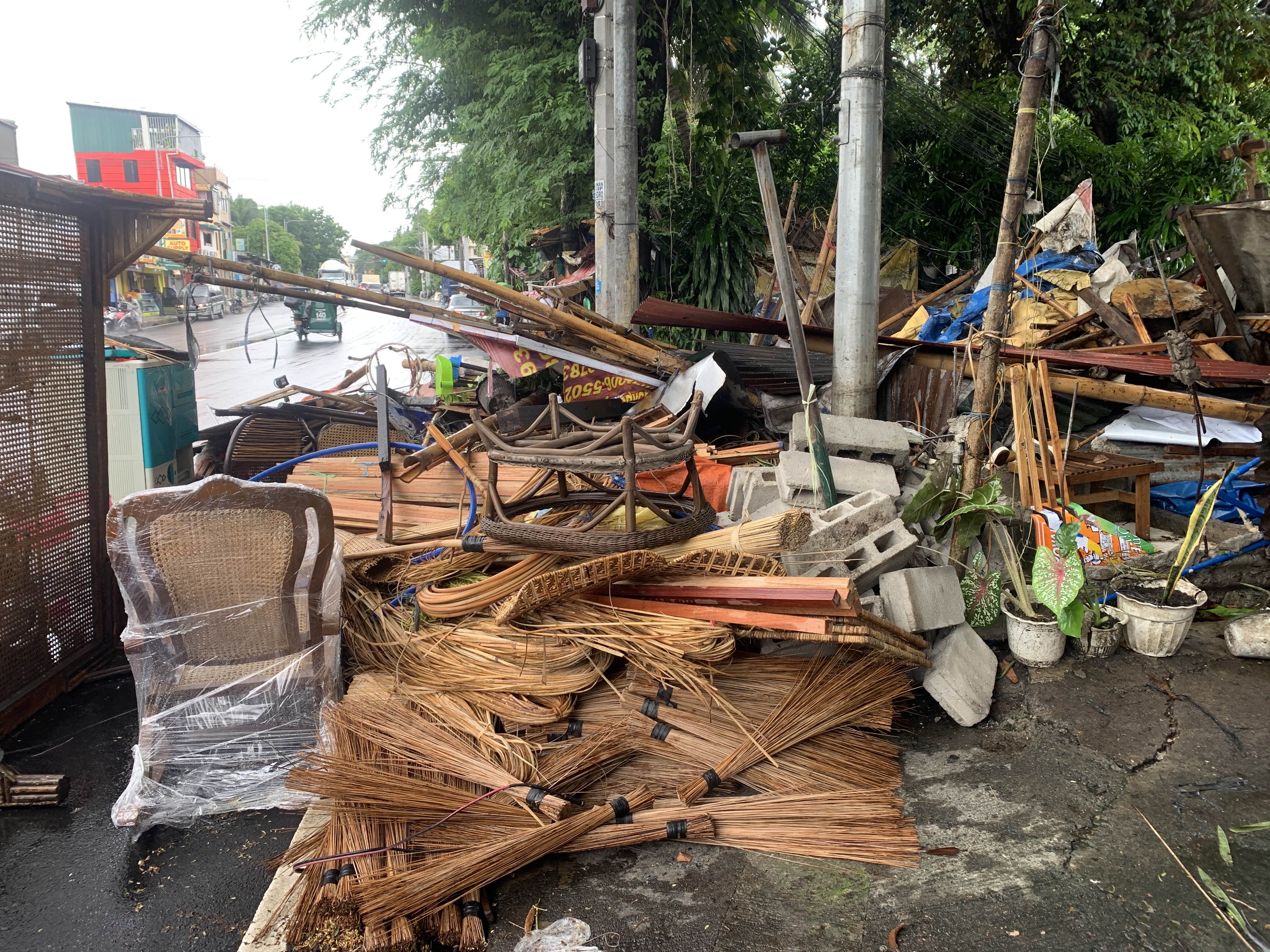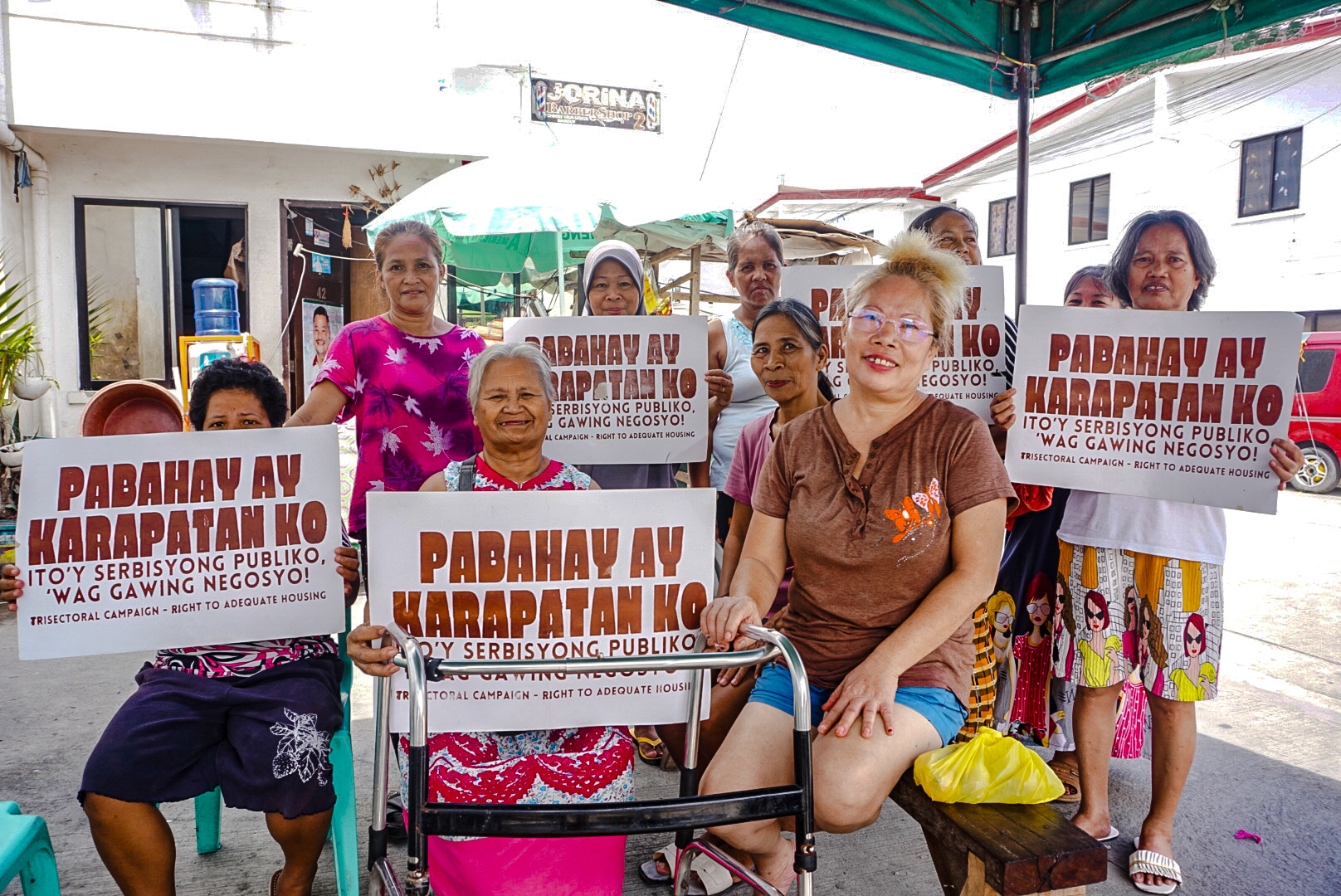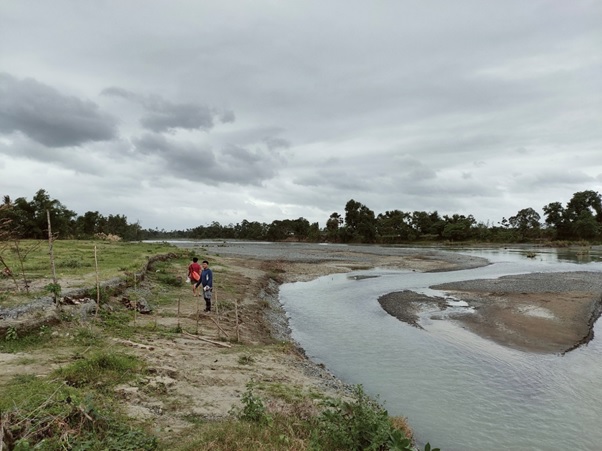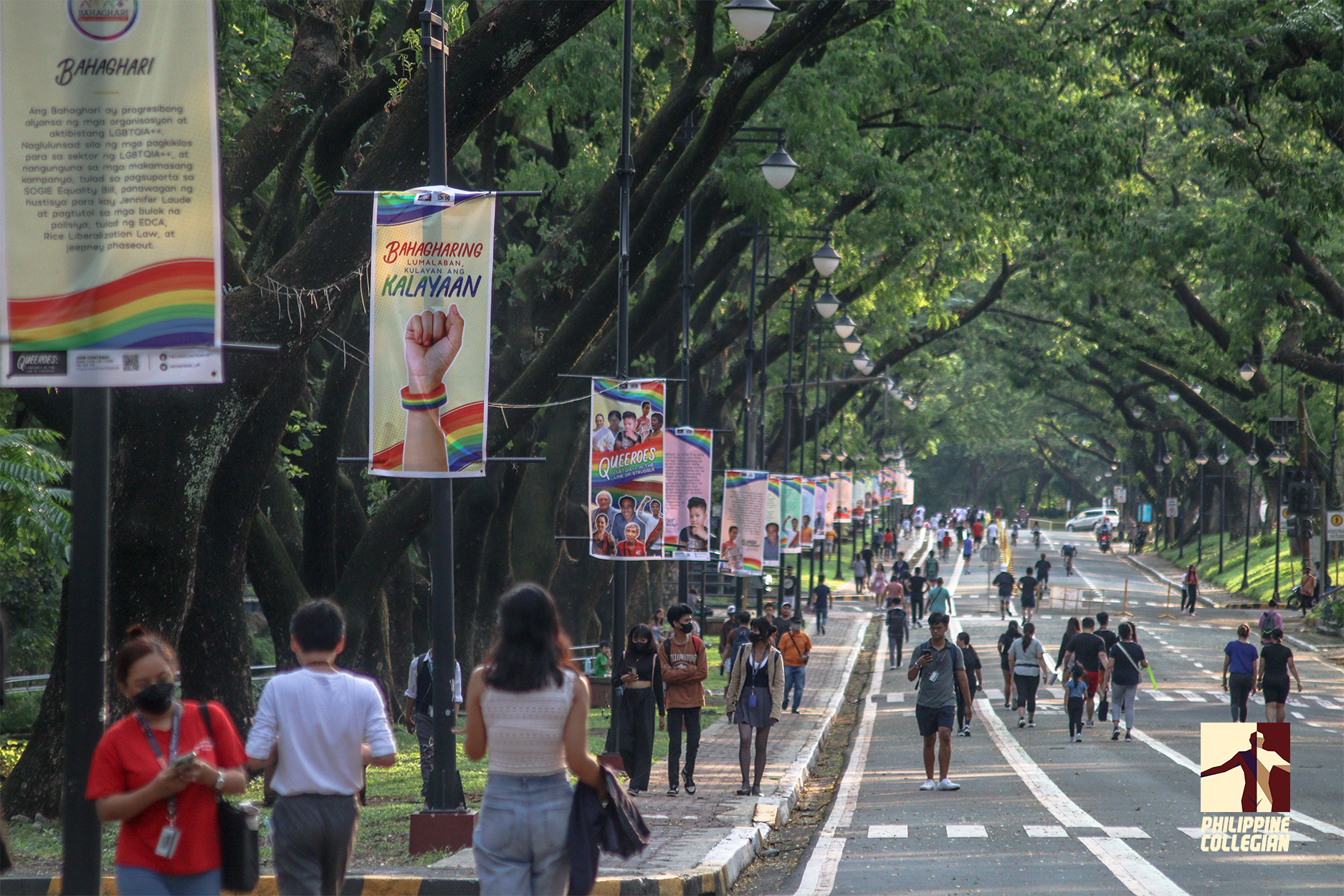Thousands of families are at risk of losing their homes amid the COVID-19 pandemic after the government lifted last month the ban on demolition activities and eviction of informal settlers, an urban poor group said.
Kalipunan ng Damayang Mahihirap (Kadamay) assailed the memorandum circular issued by the Department of the Interior and Local Government (DILG) on March 11, where it lifted its previous memorandum postponing all displacement activities due to the imposition of the enhanced community quarantine and state of national emergency.
The DILG upheld its move even though the capital region shifted back to the strictest quarantine status two weeks later, when the country recorded a sharp rise in COVID-19 cases. The demolition activities would be allowed to ensure the safety of residents living near danger zones, it said.
But for Kadamay secretary-general Mimi Doringo, the effect was quite the contrary. “Paano magiging malusog ang mga tao kung wala siyang kabuhayan? Hindi ka rin magiging ligtas kung wala kang bahay na masisilungan kapag umulan o sumobra ang init ng araw.”
Under Threat of Eviction
Should the demolitions push through, some 50,000 informal settler families could be displaced in Metro Manila alone, Kadamay estimated.
Among those at risk of losing their home is Jun Mar, a 65-year-old resident of the Vitas Katuparan Housing Project in Tondo, Manila. His family was among the original settlers of the 27-building compound when it was erected in 1990 to serve as the relocation site for those living near Pier 17 in Tondo.
But on September 1, 2020, the Department of Public Works and Highways (DPWH) issued a notice of demolition for eight of the 27 structures. This is supposedly to give way for the construction of the “Tondominium,” a high-rise residential building for city government employees and poor families. Around 700 families would be affected by the DPWH’s notice.
“Mahirap, kasi karamihan dito ay mga contractual lang na mga trabahante sa pier, mga nagbabasura, nagtitinda sa kalsada na wala nang makain,” said Mar in an interview with the Collegian. Mar also leads the Alyansa ng mga Residente sa Katuparan, their community organization fighting against attempts to demolish their units.
Threats of eviction have continued to hound them despite the pandemic and the DILG moratorium on demolition, Mar recalled. He said another groundbreaking ceremony was already held for the Tondominium on February 25, and some residents were asked to sign a “General Intake Form” after, promising that those who signed would be given 18 months’ worth of rent totaling P54,000.
Each family residing in the housing project pays a monthly amortization ranging from P250 to P2,000. However, the National Housing Authority has ceased collecting fees since the demolition notice was issued, Mar added.
Demolition Attempts
The residents of the walled city of Intramuros are facing a similar situation. At least two barangays—654 and 656—are currently under threat of displacement since a certain L.G. Mathieson Development Corporation won a 2010 court case that ordered residents to vacate their houses. Since then, they have been consistently experiencing demolition attempts.
“Nagpababa ng mga demolition team, nagpababa ng mga pulis. Kumbaga, nakabantay na talaga sila, natigil lang dahil maraming tumutol at tumindig para maipaglaban ‘yung lugar namin,” said Joenell Denanila, a 33-year-old resident of Brgy. 654, regarding the demolition threat they faced last September 2020.
For Denanila, who is also a community organizer, it is simply unthinkable that authorities would pursue displacing up to 200 families without proper relocation, in the middle of the pandemic.
“Talagang halos mawalan na kami ng pagkakakitaan. ‘Yung kabuhayan namin sa loob ng Intramuros ay ‘yung pagpe-pedicab, pagpa-paparada ng mga sasakyan, saka ‘yung pagtitinda,” he said. Even after a year since lockdowns first began, Denanila said they are still yet to recover as tourists and visitors have not yet returned to Intramuros, which is a popular tourist destination home to Spanish-era structures.
Even worse, residents like Denanila were ordered by the court to pay P5,000 monthly beginning July 2008 as “reasonable compensation” for their occupation of their houses. If the demolition order had been implemented, he said they would not only lose their homes but would also be forced to pay exorbitant fees.
Though the attempt to demolish their community has been foiled, Denanila believes they could still be displaced anytime. “Inaamin naman naming talo kami sa kaso, nabenta na ‘yung lupa namin, nabenta na ‘yung komunidad namin,” he said.
Possible Loss of Livelihood
The narratives of the Katuparan and Intramuros residents reveal the government’s disregard of the urban poor—who are among the most vulnerable—during the pandemic, according to Doringo. The government would rather risk exposing residents to COVID-19 in search of relocation, instead of simply letting them keep their homes for now, she added.
Both Denanila and Mar agreed they are willing to vacate their communities had the government offered them sufficient relocation assistance.
Mar said they have been promised relocation in Naic, Cavite—a town more than 50 kilometers south of Manila. But for them, leaving Tondo might come at a heavy cost.
In Mar’s case, in addition to his P4,000 measly monthly pension, his 63-year-old wife still works at a gasoline station in Tondo for their daily expenses. “Umaasa ang karamihan dito sa ayudang ibibigay ng gobyerno. Kung walang ayuda, maghihirap ang mga tao,” he said.
Intramuros residents, meanwhile, have been asked to relocate to Bacoor, Cavite, possibly risking their livelihood still largely dependent on the city. Even more problematic is the fact that they will be left to fend for themselves after being given a housing unit, which is not actually free.
“Pag inilabas mo siya doon, siyempre, ‘yung kabuhayan niya maiiwan,” Doringo explained, saying most urban poor communities are employed in the informal sector. “Ibig sabihin, [sila ay] mga labandera, manikurista—may mga kani-kaniyang mga suki ‘yan. Mahirap ulit kumuha ng tiwala ng iba,” she added.
Standing Their Ground
While residents like Mar and Denanila concede that they will eventually give up their communities, they would not let go of their homes until their demands are heeded. The residents have similar demands: on-site development or in-city relocation, decent and free housing, and availability of livelihood.
The right to decent and free housing goes together with the right to live and the right to a healthy environment, Doring stressed. “Lahat yan dinadanas ng mga nasa komunidad. At dapat lahat yan sabay-sabay na matugunan ng pamahalaan.”
“Kahit anong ganda naman ng mga relokasyon, pero kung wala ring kabuhayan ‘yung mga maralitang ililipat, babalik at babalik pa rin sila sa mga dati nilang komunidad,” she added. “Napakaraming isinisigaw ng mga maralita, pero hindi ‘yun ‘yung nakikita ng ating pamahalaan.”
Though threats of displacement loom over their communities, the likes of Mar and Denanila would continue in their fight. “Ang panawagan namin dito sa Katuparan ay walang aalis sa Tondo, walang aalis sa Katuparan,” Mar declared.
“Kaya, maninindigan kaming ipaglaban ‘yung lugar namin, maninindigan kaming ipaglaban ‘yung buong komunidad ng Intramuros na no to demolition without relocation,” Denanila said. “Kahit na iyan ay maging marahas pa.” ●







